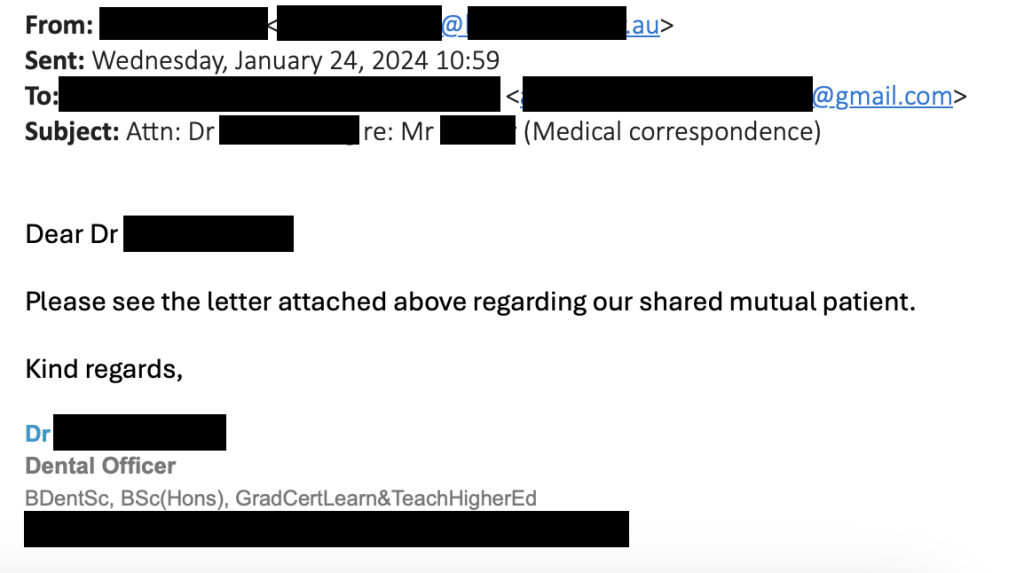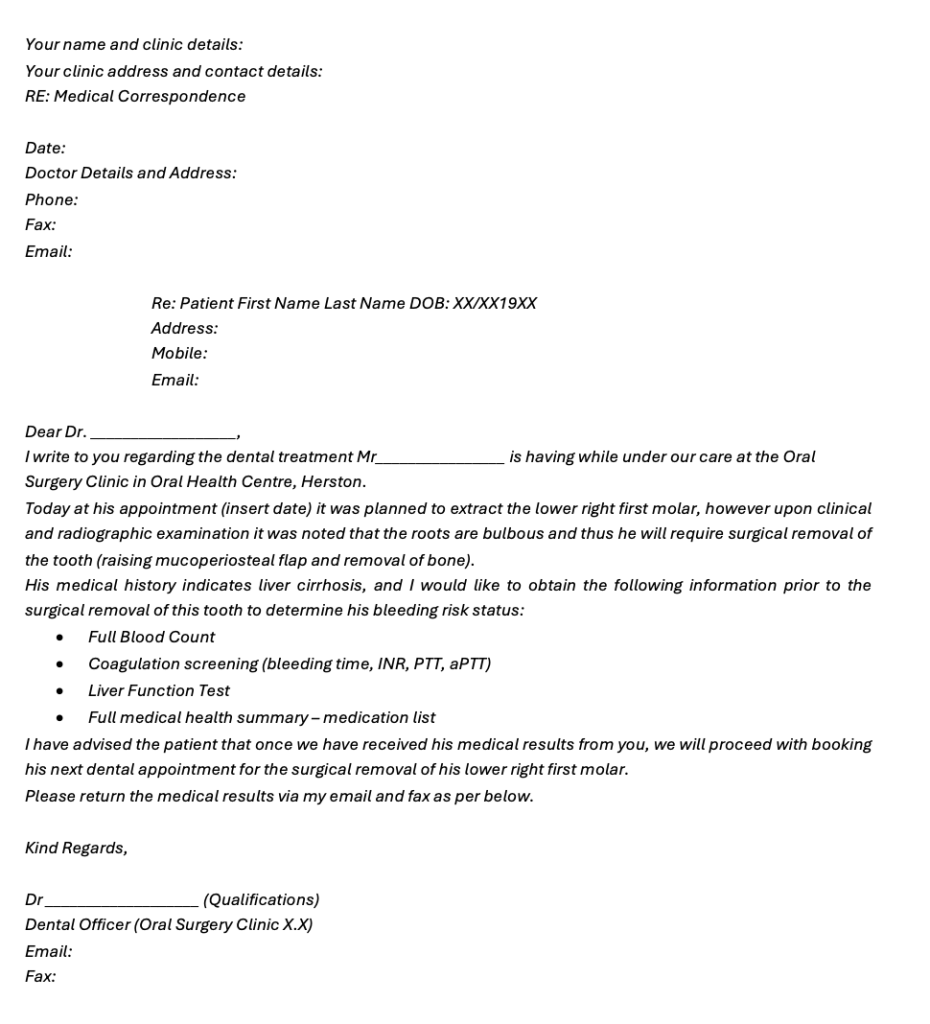6: Communication with health care team
Jessica Zachar and Sowmya Shetty
Learning outcomes
- Explain the need to communicate with a primary health care provider for dental management of a medically compromised patient.
- Describe the various modes of communication that can be employed in communicating with interprofessional health care teams.
Why communicate with primary health care provider?
This is usually to seek further information about a patient’s medical history and current health status to obtain results of medical tests or request further medical tests or investigations.
Oftentimes, patients are unaware of their current health status or medications. The student practitioner or experienced dentist will need further guidance or information to determine the next course of treatment.
In such scenarios, the clinician must contact the healthcare provider overseeing the patient’s care, which could be the primary care physician, a specialist, a nurse practitioner or a cancer care coordinator at the hospital.
How to communicate
Before contacting the general practitioner (GP), it is crucial to ensure the accuracy of the patient’s current GP information. If patients were referred by their GP for dental procedures, this pertinent detail could be found in the referral form.
When initiating contact with the GP, it is vital to introduce oneself clearly, furnish the patient’s details accurately, and then explain the purpose of the communication comprehensively. This approach fosters effective collaboration and ensures seamless coordination of care between dental and medical professionals.
The dental student practitioner should seek advice from their supervising clinician before contacting the patient’s medical care team. The communication could be over the phone and then followed up via a written formal letter. Any form of communication engaged in should be recorded in the clinical notes.
Watch Case study 1.3: Communicating with primary health care team (YouTube, 2m) for a communicating via telephone example interaction.
The written letter is usually emailed or faxed to the medical practice or hospital that forms the patient’s primary health care provider. A template should be used where the dental practitioner has an official letter head, with contact details along with clear address to GP and all relevant patient details and information.



